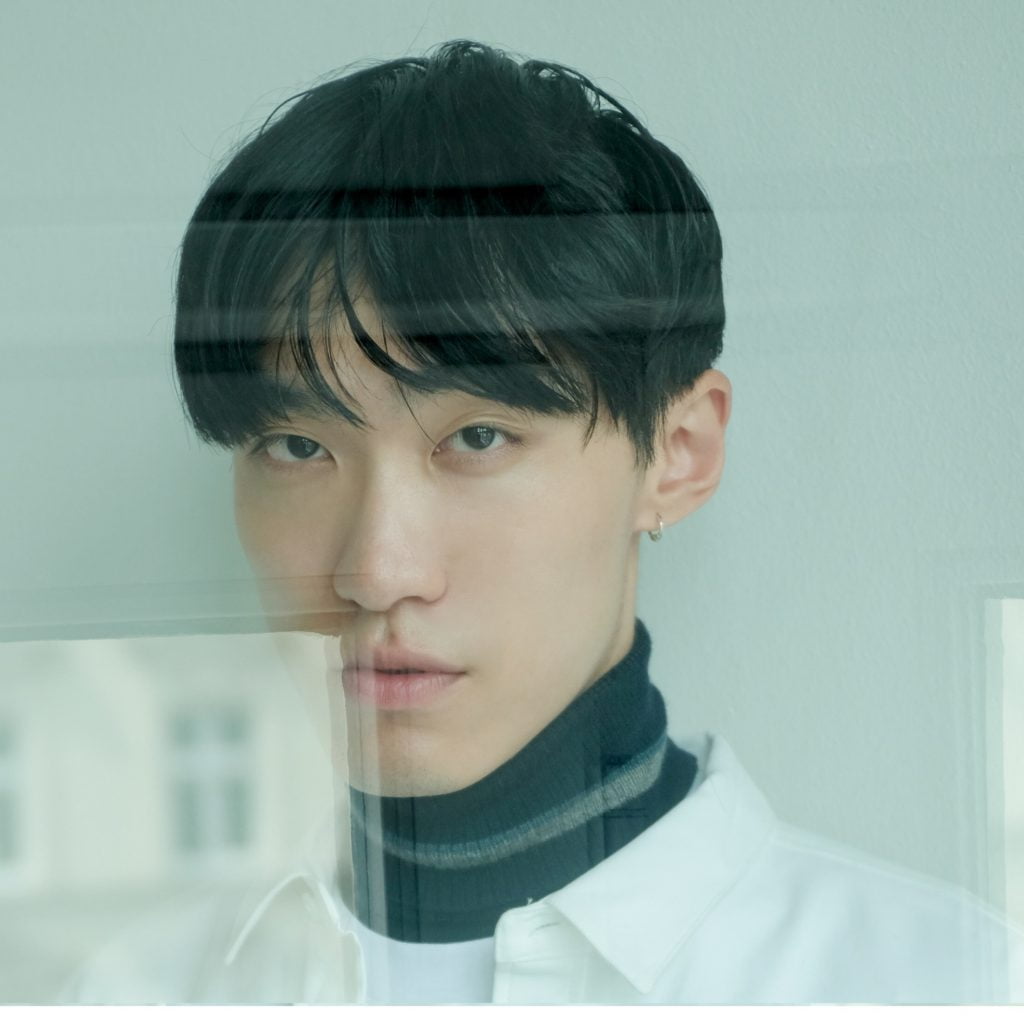
- Nieuws
Interview: Isaac Chong Wai about The Collective Individual Exercises
Isaac Chong Wai is the youngest artist in the SPRING program. The Berlin-based artist from Hong Kong holds an MFA in Public Art and New Artistic Strategies from the Bauhaus-Universität in Weimar Germany, and a BA in Visual Arts from the Academy of Visual Arts at the Hong Kong Bap-tist University. Chong Wai works with diverse media, including performance, site-specific instal-lation, public art, video and photography. He engages themes of collectivism and individualism, politics of time and space, border, migration, war, militarism, racism, identity politics, public sphere and human rights. His performance The Collective Individual Exercises asks the questions: Who is this collective? And who are the individuals in the big crowd? What is personal and what is public? During SPRING, 3 shows pop up in different squares across the city.
You mostly studied art, how did you eventually join the world of theatre?
Actually, I never thought I would be included in the world of theatre. My academic background is visual arts. In the beginning I started with drawing, and performing drawing with my own body. It came to a point I wanted to work with more people. In Hong Kong, people are very close physically because of the overpopulation, but at the same time we are so far from each other that we never get to know the person who is standing right next to you. I wanted to use performance as a means to gather people to deal with the concept of multitude these days, so I came up with ideas of mass performance, working with over hundreds of people most of whom don’t know each other. I think the world of theatre also looks for more different kinds of practices concerning the public sphere and the participation of the public. That would be one of the reasons why my works suit very well in this context. And I am happy to be included in the world of theatre.
During SPRING Chong Wai he let us think about the future with his performance The Collective individual Exercises – a mass choreography in public space with up to a 100 participants.
Why have you chosen to use mass choreography?
It started with a research I did in Weimar Germany, about a historical square called the Gauforum (or the Hitler’s square; now known as the Weimarplatz [red.]). They used to gather these huge amounts of people at such squares. They did not gather for protest, they gathered to live out certain political principles. Nowadays, the biggest amount of people you can see publicly is during soccer games or a protest. That raised the question: what does it mean to come together? So I had the idea about how coming together goes back to yourself as an individual. The whole mass goes back to every single individual, and every single individual’s value creates this performance.
What can we expect of this performance?
This project somehow got translated into so many different contexts. It premiered in Weimar, and then we went to Gwangju in South Korea, Hong Kong, Wuhan in China and now in Utrecht. In Weimar we talked about our histories, in Utrecht and other locations we talk about the futures. The idea of the futures interests me a lot, we don’t know every single person in the world, but the future that we are encountering is constructed through the interrelationship created by so many different events and every single decision. We come together and talk about the time that has not yet come to create a sound consisting of many individual’s dreams, proposals, expectations, plans and hope.
What influence would you like to have on the audience?
The goal is to create a time in public space which can be a form of memory in the end, or even a form of history. That this very striking and strong visual impact of a large group of people imprints in the audience’s mind. People would sometimes ask me “Is this a protest?” You see so many people just standing looking like a protest in a very minimalistic way. But they are talking about their futures. The collective and individual is constantly a back and forth dynamic. The participants are performing, but at the same time they are also an audience. It’s very interesting to see how their futures become a part of the work. It’s like a ping pong from a future to another future. In my experience it also binds a very weird trust between them – like we don’t really know each other but we’re sharing our proposals of the futures together in public space.
If you participated during the performance, what would you say about the future?
Honestly, that’s quite difficult *laughs*! Because we tend not to talk about futures but more about the past. It depends on the person, some talk about dreams or imagination, and others about expectations and wishes. I find it important to join my performances so I joined the performance Hong Kong since I’m from there. I was talking a lot about the people I want to see in the future, and how the future can be constructed on the basis of how you’re feeling now.
• The Collective Individual Exercises can be seen on Thursday 17 May (Lucasbolwerk), Friday 18 May (Domplein) and Saturday 19 May (Stadhuisbrug). Click here for tickets!
Photo: © Volker Eichenhofer